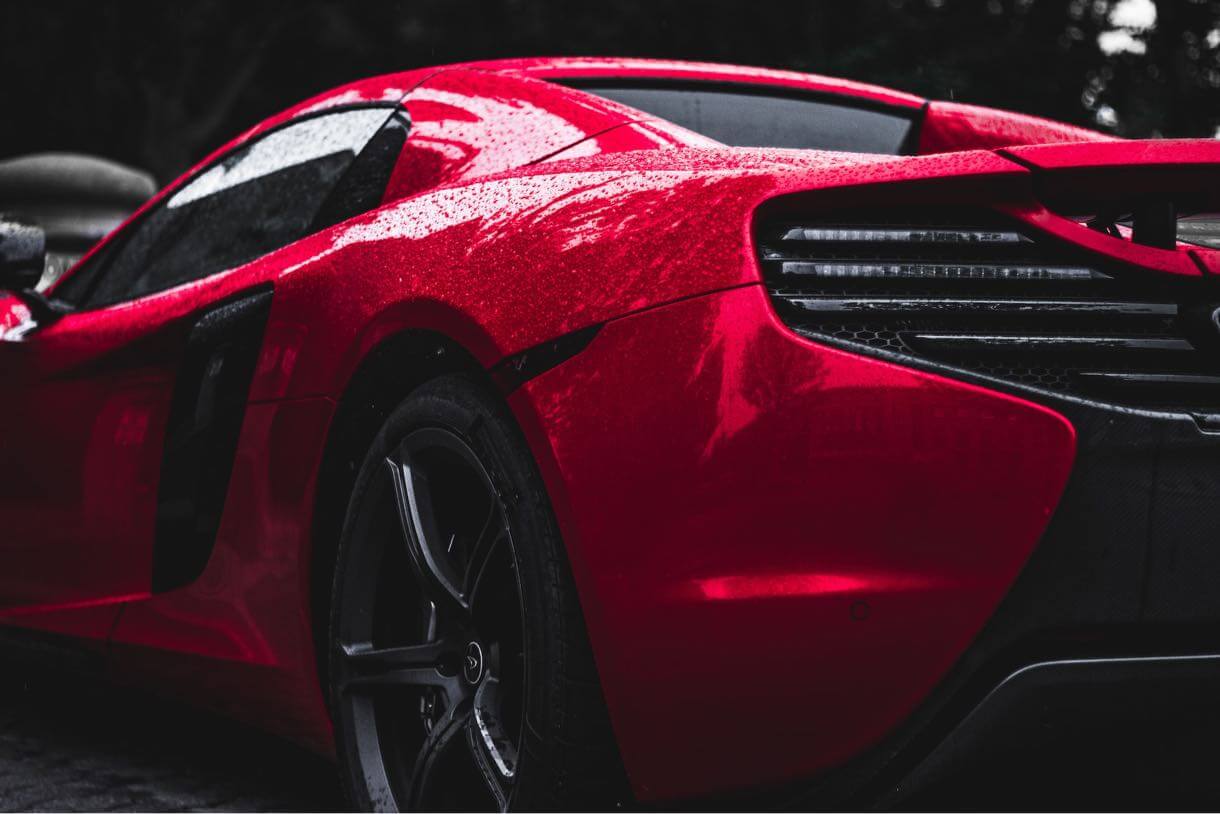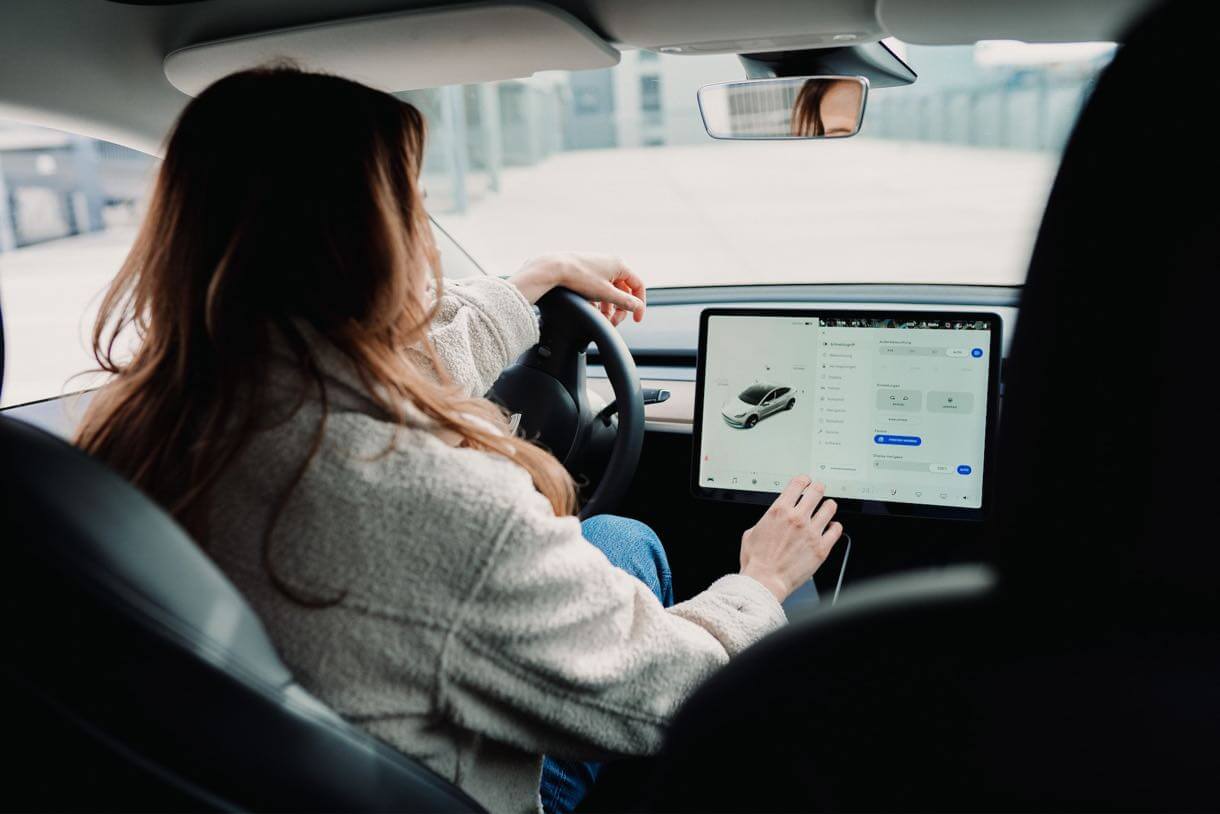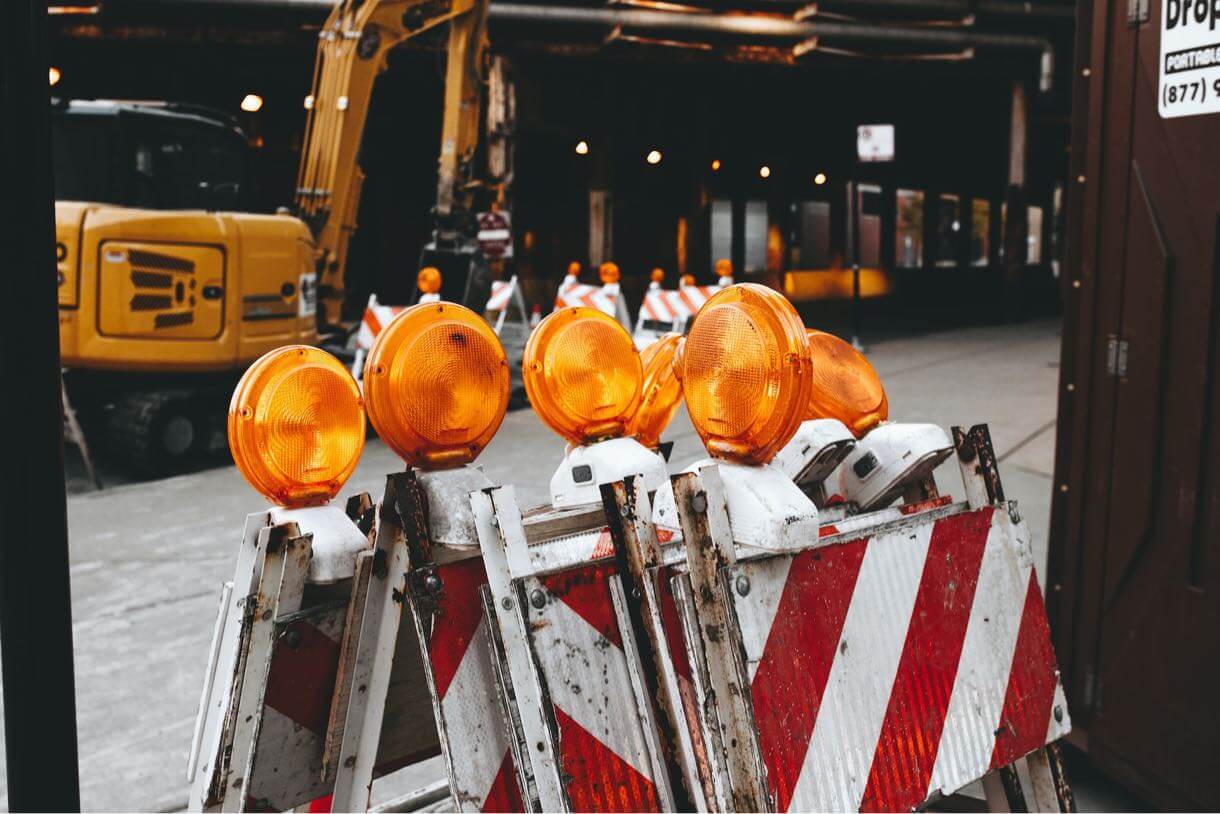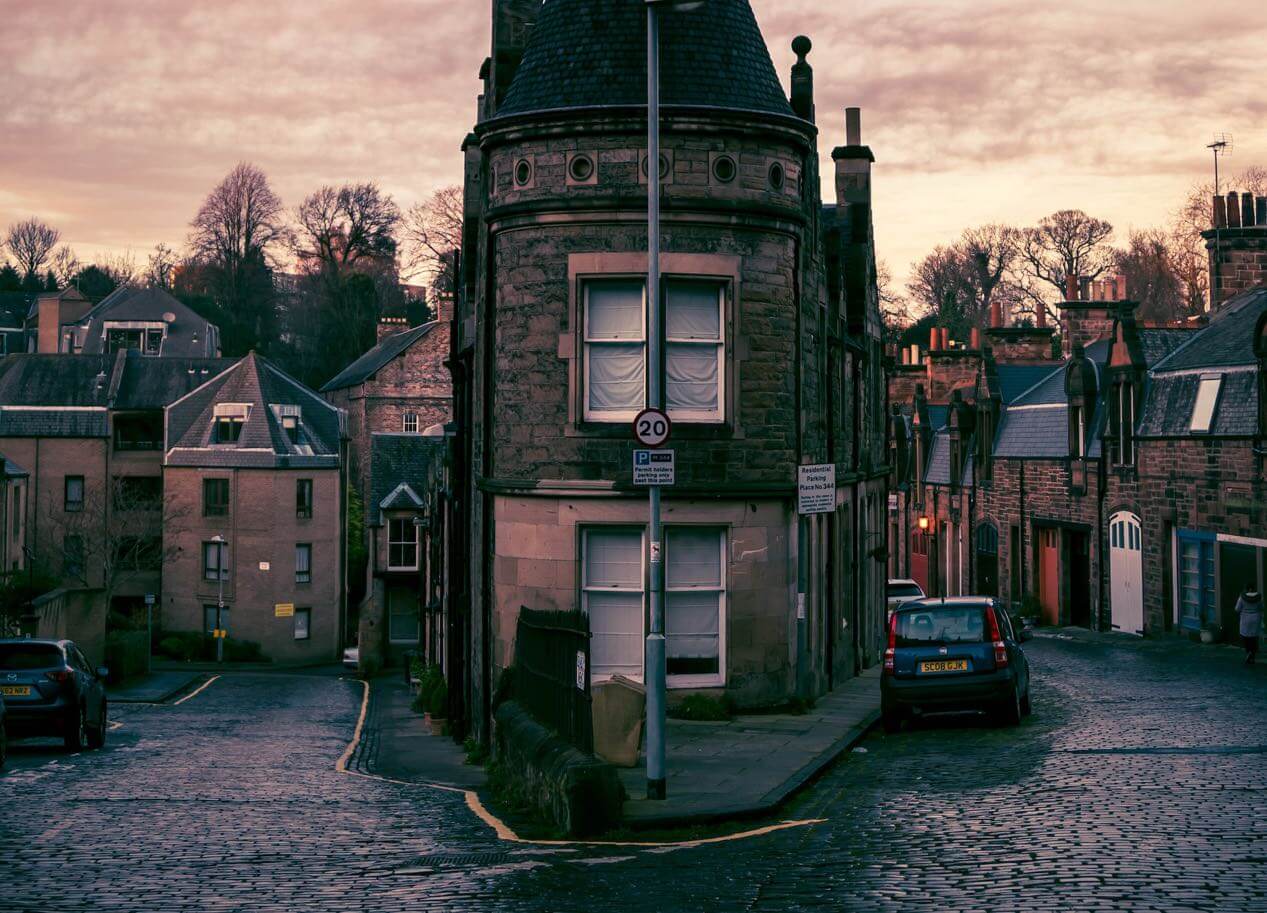As of 2014, you must take the UK driving theory test in English. You cannot take the theory test with a foreign language voiceover or use an interpreter during the exam. In this post, we will give you some useful study links and provide you with essential vocabulary and phrases that will get you on the road to passing your theory test first time. Let’s take a look!

The test has 50 multiple-choice questions. There are four possible answers for each question, and you must choose one correct answer.
The test is 57 minutes long. You can then take a 3-minute break before you take the hazard perception test, which lasts about 20 minutes. Be prepared to spend an hour and a half at the test centre.
You need to get 43 of the 50 questions correct (86%).
You just need to bring your provisional photocard driving licence to show at the test centre’s reception. If you have a paper licence, you will need to bring other photographic identification or they will not allow you to take the test or refund your money.
It currently costs £23 to take the test.
The information you need to pass the test is in three books:
You can buy them in bookshops, online or view them free on the government website by following the link below. This government website also has free mock (practice) tests for the driving theory test and the hazard perception test, as well as information on other books and apps you can buy.
Check out this website for .

1. Accelerator: The righthand pedal a driver uses to make a vehicle accelerate (go faster).
Pete pressed the accelerator, checked his blind spot, and joined the motorway.
2. Anti-lock Braking System (ABS): A braking system that prevents wheels locking when the driver has to brake suddenly.
The car’s ABS kicked in when I had to brake suddenly at a red light.
3. Automatic transmission: A gear changing system that automatically changes the gears for the driver.
Lauren decided to choose a car with automatic transmission because she thought it would be easier to drive.
4. Brake: The middle pedal a driver uses to reduce speed or stop a vehicle.
Lisa hit the brakes hard when a child ran into the road.
5. Brake fade: When brakes become less effective due to overuse.
The MOT stated that John’s brake pads needed replacing due to brake fade.
6. Catalytic Convertor: A system fitted to a vehicle’s exhaust pipe that changes toxic gases from the engine into less harmful gases in the air.
The car in front obviously had a catalytic convertor problem – black, smelly smoke was coming from its exhaust.
7. Clutch: A pedal a driver operates with their left foot when changing gears or moving off. When the clutch is down, it disconnects discs to allow the driver to change between gears.
Liz pressed the clutch down to put the car into third gear.
8. Exhaust: A tube system that takes gases from the engine and pushes them out at the end of the vehicle’s exhaust pipe. These gases are called emissions.
A crack in the exhaust meant harmful emissions were leaking from it.
9. Fog lights: Very bright lights on a vehicle that should only be used when fog or mist reduce visibility to less than 100 metres.
Chi couldn’t see because of the fog, so he switched on his fog lights.
10. Four-wheel drive (4WD or 4×4): A vehicle that provides engine power to each of its four wheels, allowing it to grip the road better and have more control.
My car’s four-wheel drive mode allows it to drive off-road in fairly deep mud.
11. Gears: These control the power that the engine delivers to a vehicle’s wheels. Low gears are better for hills and low speeds. High gears are better for high speeds and flat roads. We often use the phrase put a vehicle into gear to mean select and engage a gear. We also use the word shift instead of change – e.g. Shift the car into third gear.
The driving instructor explained the gears to me at the first lesson. He told me to put the car into first (gear) to get it moving.
12. Gear stick: The lever to the left of the driver in between their seat and the passenger seat, used to change the vehicle’s gears.
Terry pressed down on the clutch and grabbed the gear stick to shift into fourth.
13. Handbrake: A brake operated by a lever behind the gear stick. A driver uses this brake when the vehicle is parked or when waiting on a road with an incline (slope or hill).
Patricia had to wait at the traffic lights on a hill, so she engaged the handbrake.
14. Hazard Lights: Flashing amber (orange) side lights that a driver switches on to show others there is a problem with the vehicle or danger ahead.
Neil’s car broke down at the side of the road, so he put the hazard lights on to warn other drivers.
15. Indicators: Flashing lights that a driver operates with a lever to indicate to others that they are turning left or right.
Before turning left at the junction, Janet put her left indicator on.
16. Manual transmission: A manual gear changing system that the driver controls by moving the gear stick and operating the clutch. We also call this ‘stick shift’.
Paddy thought that manual transmission made driving a more fun and challenging experience.
17. Ministry of Transport (MOT): This is an annual test on a vehicle to check its safety and condition. All vehicles must pass this test to prove their roadworthiness.
Kevin couldn’t drive his car because he had forgotten to bring it in for its MOT.
18. Mirrors: Drivers have a selection of mirrors they can look in to check for dangers when performing manoeuvres in their vehicle. There are two wing mirrors on either exterior side of the car, which show what is coming behind the vehicle from the sides, and a rear-view mirror on the front ceiling or windscreen for checking what is coming directly behind it.
The driving instructor told the student to check the mirrors before using the indicators to signal and move off.
19. Power steering: These days, most vehicles have power steering – a system that allows the driver to turn the vehicle’s wheels easily with the steering wheel.
George remembered the days when you used to have to turn the steering wheel very hard because there was no power steering!

20. Angled move off: You might have to pull up (see below) behind a vehicle in a test or move from a parking space after parallel parking (see below). This will involve moving your vehicle from a straight position to an angled one going into flowing traffic. While you are moving off, the instructor will be checking your clutch control and your observation skills: checking mirrors, using indicators, etc.
The instructor asked her student to remember to check the mirrors before beginning the angled move off.
21. Biting point: This is the point at which the vehicle is “balanced” and held in position when the driver raises the clutch pedal enough. It is a key point of clutch control, especially when pulling off (see below). When the clutch control of the driver is poor, the vehicle is likely to stall.
The car jumped forward when Gabriel let the clutch out too quickly while trying to find the biting point.
22. Clutch control: The use of the clutch to change gear or get the vehicle moving.
The driving instructor told Dale he had excellent clutch control when changing from first to second gear.
23. Driving forwards/reversing into a bay: A bay is a designated place to park a vehicle, usually marked out in white paint. Driving examiners may ask test takers to drive the vehicle forwards into a specific bay.
Leonard told his student to drive forwards into a bay and to make sure that the wheels were inside the white lines of the parking space.
24. Emergency stop: This is the sudden application of the brakes to stop a vehicle fast.
The motorist decided it would be safer to go through the amber lights than to perform an emergency stop.
25. Hill start: Drivers sometimes need to pull off while on a hill. This means keeping the handbrake on while reaching the biting point, and then releasing the handbrake when the accelerator is engaged.
Alya hated the hill start part of her driving lessons as she had bad clutch control.
26. Manoeuvre: This is the skilful movement or control of a vehicle. You must perform a variety of manoeuvres in the practical driving test, such as parallel parking.
The instructor told his student to turn left into the car park so they could practice some manoeuvres.
27. Overtaking: A process that involves one vehicle accelerating past another by driving out towards the centre of a road or changing lanes. After overtaking, the vehicle must then signal (indicate) and return to a lane on the left.
Sarah checked her mirrors and signalled to move into the second lane and overtake the slower car.
28. Parallel (or reverse) parking: This manoeuvre involves pulling up next to a vehicle in order to reverse into the space behind it. The vehicle must be parallel with the kerb at the end of the manoeuvre.
Frank still found parallel parking the most difficult manoeuvre on the driving test.
29. Pull/Move off: This is when a driver begins to move a vehicle.
When the light turned green, Elisa pulled off.
30. Pull up: This is when a driver stops at the side of the road for some time.
The driving instructor asked the test taker to pull up on the left at the end of the road.
31. Reverse park: This is when you reverse the vehicle into a parking space.
There was only space left in the car park, but Janet had to reverse park to use it.
32. Take the first/second/third exit: When a driver approaches a roundabout, they need to choose which exit to take. If they turn left, they take the first exit. If they go straight ahead, they take the second exit. If they turn right, they take the third exit.
A driver should look for markings on the road asking them to get into a particular lane to go left, straight ahead or right. If there are no markings, then they should stay in the left lane to take the first and second exit, and the right lane to take the third exit. They also need to indicate left before leaving the roundabout.
Sally indicated left to show she was about to take the first exit.

33. Airbag: A soft safety bag or cushion that inflates when sensors detect a strong impact to the vehicle’s exterior.
Luckily, Tina’s airbags inflated during the collision, saving her life.
34. Aquaplaning/Hydroplaning: This is when a vehicle slides uncontrollably on a wet surface.
The rainwater created a barrier between the car tyre and the road, which meant Tim’s car started aquaplaning!
35. Black ice: Ice that is hard to see and is especially dangerous to drivers.
Last winter, black ice caused many accidents on UK roads.
36. Blind spot: Part of a road that a driver cannot see with mirrors, and which they must check by looking over their shoulder before manoeuvring or overtaking.
The taxi driver forgot to check his blind spot before overtaking and almost caused an accident on the motorway!
37. Coasting: Driving a vehicle in a neutral gear or with your foot on the clutch, or both at the same time, meaning the vehicle is moving with no engine power. This is bad because you lose extra braking power from the lower gears.
The car crashed at the bottom of the hill because Simon hadn’t anticipated the extra braking time needed when coasting.
38. Oversteering/Understeering: Oversteering happens when a vehicle’s back wheels fail to follow the front ones, resulting in the vehicle heading towards the outer side of the turn. Understeering is when the steering wheel doesn’t turn the wheels enough.
The police decided they needed an investigation to discover whether the accident happened due to understeering or oversteering.
39. Seatbelt: A piece of material with a metal buckle that fastens into a clip. This is a vital piece of safety equipment and saves lives in an accident.
The police pulled Andrew over because he wasn’t wearing his seatbelt.
40. Skid: This is when a vehicle’s tyres lose traction on the road, causing it to slide. This can happen when braking too quickly or driving in icy weather conditions.
The race car skidded round the corner at high speed.
41. Stalling: This is when an engine stops working without warning. It can happen when drivers brake too suddenly or don’t use good clutch control when moving off. It can be a hazard because when you stop suddenly, the driver behind might not expect it.
The driving examiner still passed Donna even though she stalled twice at the beginning of the test.
42. Stopping distance: The time it takes to stop the vehicle. This is calculated by adding the time it takes to notice a danger (thinking distance) to the time it takes the vehicle’s brakes to bring it to a stop (braking distance): thinking distance + braking distance = stopping distance.
The car travelled two metres of thinking distance before Dave noticed the hazard. It took another 10 metres of braking distance, resulting in a total stopping distance of 12 metres.
43. Tailgating: This is when a vehicle drives too close to the car in front.
Hilary hit the car in front when it stopped at the traffic lights, because she was tailgating.
44. Wheelspin: When a vehicle’s wheels spin out of control on the road. Usually due to it entering a turn too fast.
The newspaper said that the driver’s speed caused him to wheelspin and swerve off the road.

45. Chicane: A tight double bend that slows vehicles down. Often indicated on a triangular sign by a black bending line indicating a road with sharp corners.
The local council built a chicane in the road due to frequent speeding and accidents.
46. Clearway: A road that cannot have any traffic stopped on it at any time. The sign has a red circle filled with a blue inner circle with a red cross going through it.
The traffic warden gave the driver a ticket for parking on the clearway.
47. Contraflow: Some roads might have one lane of traffic going one way and another lane of a different type of traffic (e.g. bicycles) traveling in the opposite direction. This is normally indicated with a blue sign with white arrows pointing in opposite directions, and a picture indicating the type of traffic.
While cycling to work, Jen found the contraflowing cycle lane scary because you were riding against the traffic in the other lanes.
48. Dual carriageway: A road with two sides (or carriages) and multiple lanes used for overtaking. The road on the other side is separated by a central reservation to prevent collisions between oncoming traffic.
Zeph overtook the lorry on the dual carriageway.
49. Hard shoulder: An extra lane on a motorway that vehicles need to leave clear so drivers can pull over if they have an accident or breakdown. Vehicles can sometimes use it when road signs indicate so, such as when roadworks are in progress.
Smoke started coming out of Fred’s engine, so he pulled over onto the hard shoulder.
50. Junction: A place where two or more roads meet: there are T-junctions, where two roads join in the shape of a T, crossroads, where two roads meet in the shape of a cross, and box junctions marked by crossing yellow lines (hash markings) on the road. Vehicles must not wait in a box junction – this must always be kept clear. There are many other types of junctions.
Vehicles must slow down or stop at junctions to obey traffic signs, traffic lights or check for traffic.
The driving instructor told the learner to slow down at the T–junction.
51. Kerb: The concrete strip that separates the road from the pavement where pedestrians (people) walk.
The lorry went up onto the kerb while it was reversing and almost hit a pedestrian!
52. Motorway: A motorway is similar to a dual carriageway but often has more lanes for overtaking. There are also more rules on a motorway – e.g. only motorised vehicles can drive on a motorway.
The camera showed a cyclist attempting to ride on the motorway and the police stopping them.
53. Roundabout: A junction with a circular island in the middle that traffic circulates around. They often replace traffic lights at junctions to improve traffic flow.
The new roundabouts improved the flow of traffic around the city centre.
54. Speed bumps: These are raised surfaces on a road used to slow vehicles down. We sometimes call them ‘sleeping policemen’!
Cars were driving through the village too fast, so the council made plans to install speed bumps.
55. Verge: A strip of grass at the side of a road.
Dina fell asleep at the wheel and her car veered off onto the verge.

56. Pelican crossing: Crossings are used to help pedestrians cross the road. Pedestrians operate pelican crossings by pushing a button. After a while, the traffic lights at the crossing tell drivers to stop with a red light and pedestrians can cross safely.
A red person symbol tells pedestrians to wait, and a green walking person tells them to cross. Drivers cannot move until all pedestrians have crossed. If the road is empty, they must wait for a flashing amber light (orange light) or green light before moving off.
The pedestrian pressed the button at the pelican crossing and waited for the green person symbol to light up.
57. Puffin crossing: Similar to pelican crossings but use sensors to detect whether pedestrians walk off or cross early. If this happens, the request for traffic to stop is cancelled.
Some other differences are that green and red person symbols are on the same side of the road as the pedestrian (on pelican crossings they are on the opposite side), which makes pedestrians pay more attention to traffic. There is also no flashing amber light at a puffin crossing.
Local drivers liked the new puffin crossing because they were tired of waiting in front of an empty road when pedestrians crossed too early.
58. Toucan crossing: These are similar to puffin crossings but also have a bicycle symbol as well as a red and green person one. They are also wider, and you normally see them by parks or on wider roads.
Another similarity between pelican, puffin and toucan crossings is that they all have zig-zagged white stripes before them on the road to alert vehicles.
The council put a toucan crossing next to the park so that cyclists could have easy access to the cycle path in the park’s grounds.
59. Traffic lights: These are signalling devices that tell drivers to stop with a red light and go with a green light.
The police stopped Ben because he drove through a traffic light that was on red. (He rode a red light!)
60. Zebra crossing: You can identify these by the black and white stripes (like a zebra’s) painted on the road for people to cross on. There are no traffic lights at zebra crossings, but they have flashing orange beacons instead. Drivers must stop when they see a pedestrian waiting to cross. Pedestrians always have priority (otherwise known as ‘right of way’), which means they go first.
The pedestrian was angry because the driver didn’t stop to let them pass at the zebra crossing.

We hope this study guide helps you improve your vocabulary for your driving theory test! Your English level should be around B1-B2 in order to successfully pass this exam. You can improve your score using the links to resources in this guide.
Want to improve your English to pass your driving test? Request a free consultation today with one of our experienced UK tutors. We can help you improve your driving vocabulary, understand your driving instructor and prepare fully for both the theory and practical tests.